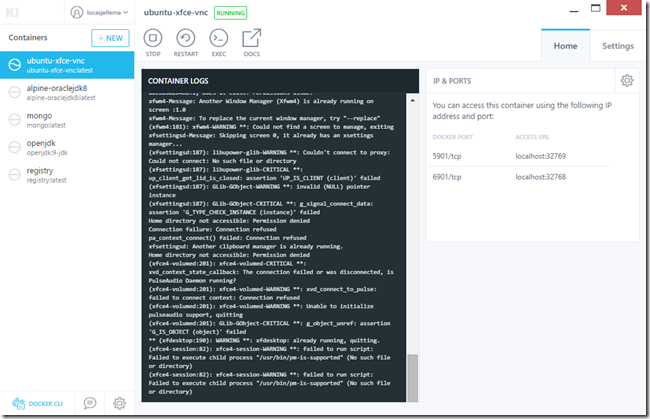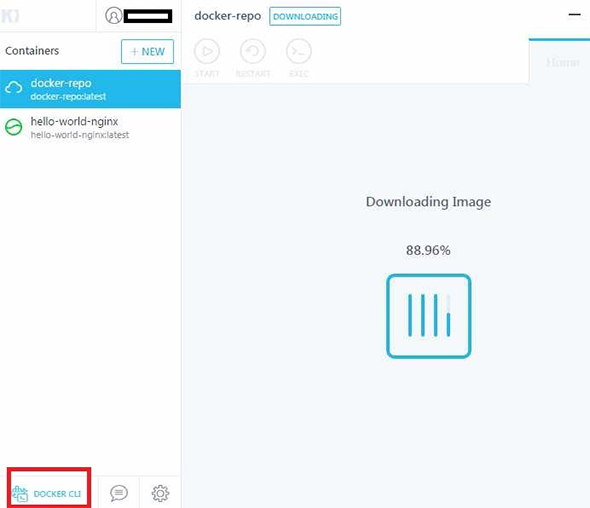
- USING KITEMATIC TO DEPLOY APPLICATIONS ON LINUX SERVER INSTALL
- USING KITEMATIC TO DEPLOY APPLICATIONS ON LINUX SERVER UPDATE
- USING KITEMATIC TO DEPLOY APPLICATIONS ON LINUX SERVER ARCHIVE
- USING KITEMATIC TO DEPLOY APPLICATIONS ON LINUX SERVER SOFTWARE
- USING KITEMATIC TO DEPLOY APPLICATIONS ON LINUX SERVER FREE
Port List port mappings or a specific mapping for the container Pause Pause all processes within one or more containers
USING KITEMATIC TO DEPLOY APPLICATIONS ON LINUX SERVER ARCHIVE
Load Load an image from a tar archive or STDIN Inspect Return low-level information on Docker objects Import Import the contents from a tarball to create a filesystem image v, -version Print version information and quitĪttach Attach local standard input, output, and error streams to a running containerĬommit Create a new image from a container's changesĬp Copy files/folders between a container and the local filesystemĭiff Inspect changes to files or directories on a container's filesystemĮvents Get real time events from the serverĮxec Run a command in a running containerĮxport Export a container's filesystem as a tar archive tlskey string Path to TLS key file (default tlscert string Path to TLS certificate file (default tlscacert string Trust certs signed only by this CA (default l, -log-level string Set the logging level H, -host list Daemon socket(s) to connect to c, -context string Name of the context to use to connect to theĭaemon (overrides DOCKER_HOST env var andĭefault context set with "docker context use") config string Location of client config files (default You can also get help using the command below: docker -help NOTE: To remove the image, remove the container first. Use the docker images ls command to get the ID. To remove a docker image, you will need the ID of the image. NOTE: The containers have to be in a stopped state in order to be deleted. Kitematic/hello-world-nginx latest 03b4557ad7b9 5 years ago 7.91MB Hello-world fce289e99eb9 19 months ago 1.84kBĭockerinaction/hello_world latest a1a9a5ed65e9 4 years ago 2.43MB Hello-world latest bf756fb1ae65 6 months ago 13.3kB This command lists out all the Docker Images. Status: Downloaded newer image for ubuntu:latest docker run ubuntu /bin/echo 'Hello world' This command combines the docker create and the docker start command. This command creates the container first, and then it starts the container.

This command stops any running container(s). We need the container ID to start the container docker stop This command starts any stopped container(s).

Result: CONTAINER ID IMAGE COMMAND CREATED STATUS PORTS NAMESġa203a1e19a2 dockerinaction/hello_world "echo 'hello world'" 12 minutes ago Exited (0) 12 minutes ago distracted_elionġe752a38edab hello-world "/hello" 26 minutes ago Exited (0) 25 minutes ago reverent_mcclintockįa622c1b5eec hello-world "/hello" 31 minutes ago Created tender_lichtermanĦff606cb1715 fce289e99eb9 "/hello" 13 days ago Exited (0) 13 days ago sharp_coriĥ7f793054be9 fce289e99eb9 "/hello" 10 months ago Exited (0) 10 months ago cool_chaplygin Lists running containers, optional -a flag to list all containers. NOTE: When a container is created, it is given a unique ID. Now let’s get to know some Docker commands docker createĬreates a container from an image. We just pulled our first docker image from the Docker Hub. Status: Downloaded newer image for hello-world:latest From the result, you can see the first image called “hello-world”, pull the image and experiment with it. This will list all the images called “hello-world”. First let’s search the Hub for an image called “hello-world” docker search hello-world Now, let’s create our first docker image by pulling it from Docker Hub.

To verify this, run $ id -nG and if you get back an output with your username in the list rest assured you did everything right. Running these commands will add your user to the docker group. However, you can add your user to the docker group, and you’ll be able to run the commands without sudo. With the basic installation of Docker you’ll need to run the docker command as sudo. If the output of your command is similar to the one below, Congrats!!!!! Client: Docker Engine - Community It gives you information about the Client and Server version, the Go-lang version, so on and so forth.
USING KITEMATIC TO DEPLOY APPLICATIONS ON LINUX SERVER INSTALL
Next, install docker with apt-get: sudo apt install docker.ioįinally, verify that docker is installed correctly: sudo docker version
USING KITEMATIC TO DEPLOY APPLICATIONS ON LINUX SERVER UPDATE
Installationįirst, update your packages: sudo apt update

If any issue occurs, try to use the community forums and go through the documentation.ĭocker-EE is the Enterprise Edition, which is a licensed and premium version of CE.
USING KITEMATIC TO DEPLOY APPLICATIONS ON LINUX SERVER FREE
Different Versionsĭocker-CE is the Community Edition, this one is free to use. It allows an application to run instances inside of a container.
USING KITEMATIC TO DEPLOY APPLICATIONS ON LINUX SERVER SOFTWARE
Docker is a virtualization platform used to deliver software in packages called containers.


 0 kommentar(er)
0 kommentar(er)
